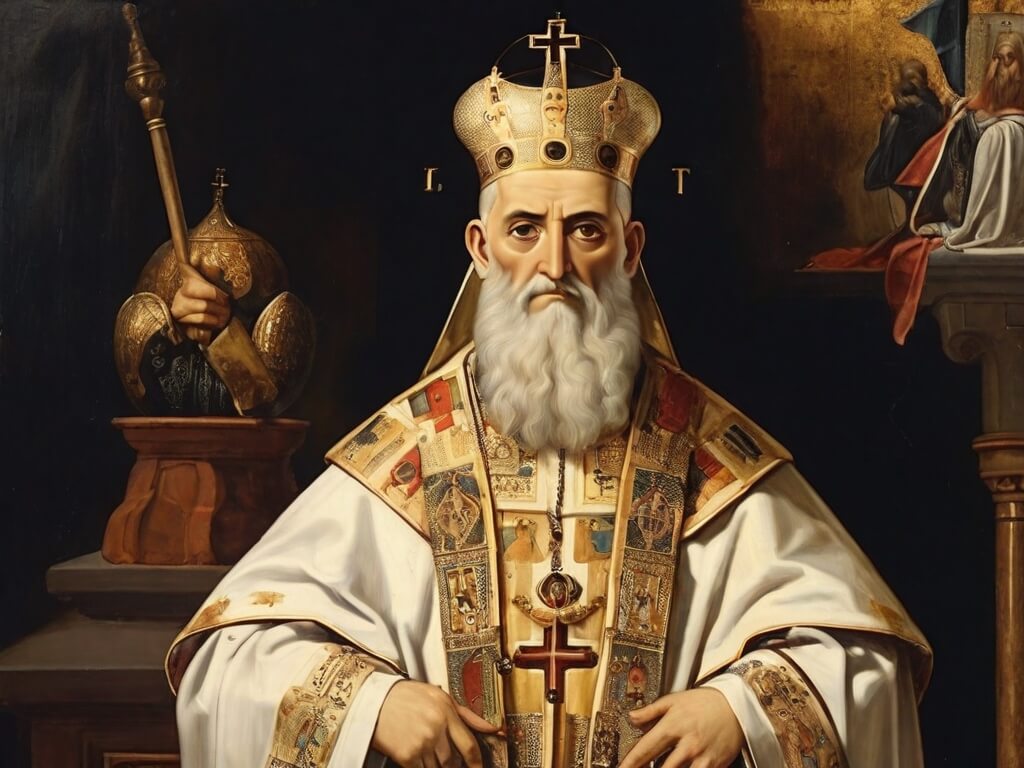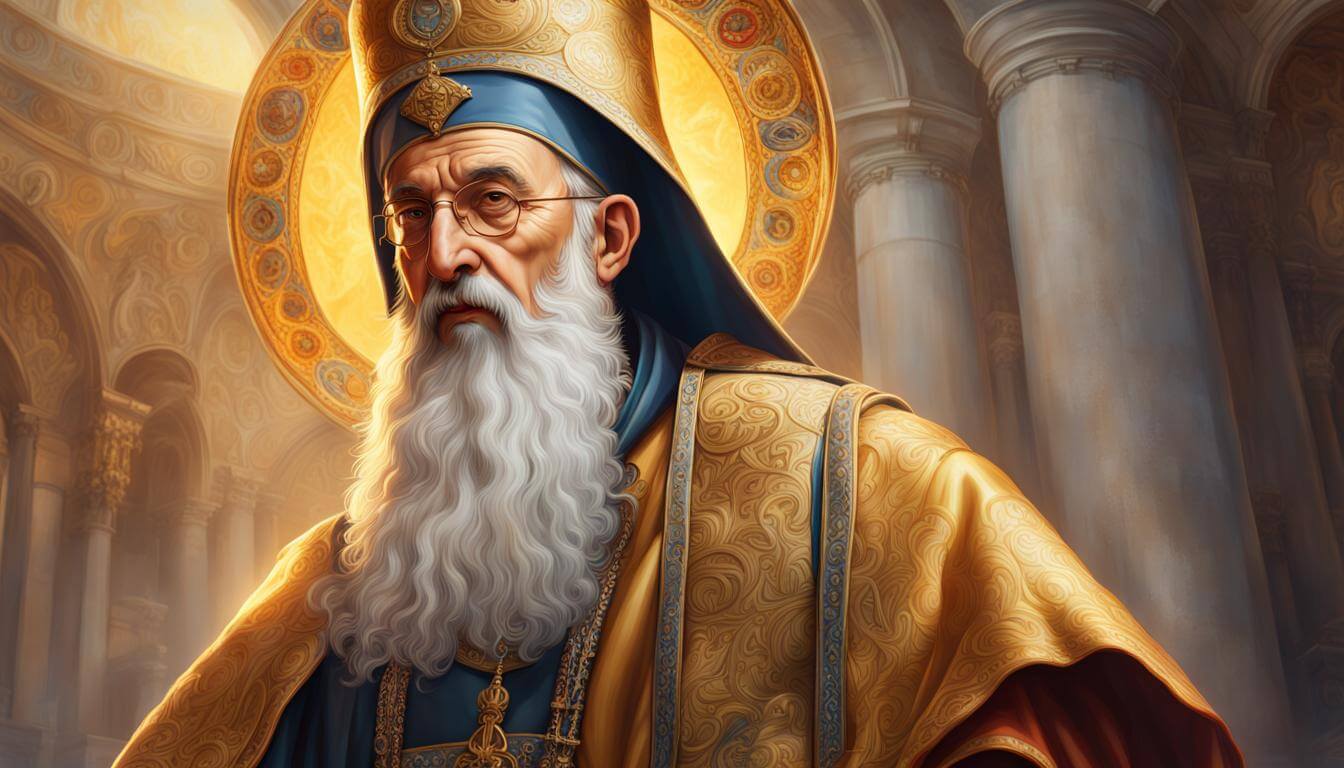Explore the life of Saint Patriarch Ignatius of Constantinople (797-877), born Nicetas, youngest son of Emperor Michael I Rhangabe. Imprisoned and later becoming a monk, Ignatius rose to the patriarchal role, fiercely defending icons during the iconoclastic persecution.

Saint Patriarch Ignatius of Constantinople (797-877), patriarch of Constantinople. Originally named Nicetas, he was born in Constantinople, the youngest son of Emperor Michael I Rhangabe, who was deposed by Leo V the Armenian in 813. After the deposition of his father, the boy was made a eunuch to prevent his ever becoming a claimant to the throne and was imprisoned in a nearby monastery. He became a monk, taking the name Ignatius, and about 840 he was made an abbot. During the icoııoclastic persecution he was a zealous defender of images.
On the death of the patriarch Methodius, Ignatius was eleeted to the patriarchal dignity. From the outset he exhibited courage and zeal but also a lack of tact and prudence. Without sufficient investigation of charges, he deposed Gregory Asbestas, arehbishop of Syracuse, who was then living at Constantinople. Gregory appealed to Rome, and Pope Leo IV and his successor Benedict III refused to confirm Ignatius’ action and insisted that there should be a full hearing of both parties. Meanwhile, at the feast of the Epiphany in 858, Ignatius had denounced Bardas (who since 856 had been exercising the imperial power) for his dissolute life. After further conflicts between them, Ignatius was deposed and banished to the island of Terebinthus.
Photius, first imperial secretary and commander of the imperial bodyguard, the most distinguished seholar of his age, was eleeted to succeed Ignatius in 858. His position was a most diffîcult one, because Ignatius had resigned, apparently only under duress, the office from which Bardas had deposed him. When Basil the Macedonian made himself emperor by a coup d’etat in 867, he deposed Photius and restored Ignatius to the patriarehate.
At the Eighth Ecumenical Council (Fourth Council of Constantinople, 869—870) called to deal with the crisis occasioned by Photius’ attack on certain matters of doctrine and discipline, Photius was condemned, the deposition of Ignatius was declared illegal, and the latter was reconfirmed as patriarch (see Constantinople, councıls of).

Ignatius took stern measures against Photius and his suppoıters but strove especially to extend his ecclesiastical authority över the Bulgarians, although this was in conflict with papal poliey. He ignored or evaded the repeated warnings of Pope John VIII (reigned 872-882), went to Bulgaria himself, and consecrated an arehbishop and a number of bishops for the Bulgarians. He died in Constantinople on Oct. 23, 877, before the arrival of Pope John’s final letter threatening him with excommunication and deposition. His feast is celebrated on October 23.
Modern research in the history of the Byzantine Church, and the era of Ignatius and Photius in particular, has given seholars a better understanding of the period and has caused a basic re-evaluation of their respeetive roles. The work of Frantisek Dvornık and fimile Amann especially has contributed greatly to the knowledge of the period.
mavi